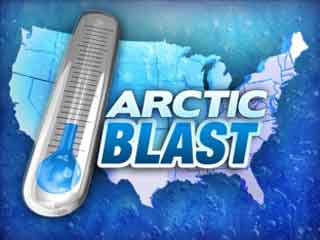State officials warn of the dangers of this weekend’s Arctic blast
STAFF REPORT
Saturday, Jan. 4, 2013, 9 p.m. — Weather forecasts for much of the Commonwealth have prompted Kentucky’s  emergency management officials to hold several conference calls with the National Weather Service (NWS) in preparation for another winter storm system approaching the state with bitter cold in the forecast.
emergency management officials to hold several conference calls with the National Weather Service (NWS) in preparation for another winter storm system approaching the state with bitter cold in the forecast.
After a brief warm up over this weekend, Arctic colder air will cause a wintry mix of snow and freezing rain before quickly turning to all snow by early evening Sunday. Most of Kentucky could see 1 to 4 inches of snow. Areas along the Ohio River and north of Interstate 71 could see significantly greater accumulations.
The biggest concern with this winter storm will be the blast of Arctic air plunging temperatures near to and below zero. Wind chills could be as low as 40 below, causing a particular dangerous period of time for Kentuckians.
Officials encourage everyone to take time now to prepare for this type of bitter cold. Cold weather safety tips to consider are:
Frostbite. Frostbite can occur on exposed skin in less than 10 minutes. Symptoms include a loss of feeling and a white or pale appearance in fingers, toes, ear tips and on the tip of the nose. Limit your time outside. If you see these signs, seek medical care immediately.
Hypothermia. Signs of hypothermia include shivering, exhaustion, confusion, fumbling hands,
memory loss, slurred speech and drowsiness in adults and children. In infants, symptoms can include bright red or cold skin and very low energy. If you notice anyone exhibiting any of the symptoms of hypothermia, seek medical care immediately.
Carbon Monoxide Dangers. Carbon monoxide is the leading cause of accidental
poisoning deaths in the United States. Breathing carbon monoxide displaces the oxygen in the blood and can cause death within minutes at high levels. Symptoms of overexposure to carbon monoxide are often mistaken for the flu and include headaches, fatigue, dizziness, shortness of breath/chest pain, nausea/vomiting and confusion. If you or someone you know experience any of these symptoms, or your carbon monoxide detector sounds an alarm, head outside immediately for fresh air and call 911.
Pet Precautions. While our pets might seem to have built-in, warm winter coats, they too are sensitive to the elements. It is recommended to bring them indoors during this bitter weather. Dogs and cats can get frostbitten ears, nose and feet if left outside during bitter cold weather. Chemicals used to melt snow and ice can also irritate pets’ paws – be sure to keep antifreeze, salt and other poisons away from pets.
Livestock Precautions. Animals can suffer from hypothermia, frostbite and other cold weather injuries. Harsh conditions weaken their immune systems and open the door to illness. Calves and swine are especially susceptible to cold. Make sure animals have a place to get out of the wind, even if it is just a windbreak or a three-sided shelter. Also provide dry bedding to protect them from frostbite. Animals also burn extra calories to keep warm in severe cold. They also need access to fresh water – not frozen streams or snow. Stock tank heaters and frost-proof watering devices will ensure that livestock get enough to drink.
During extreme weather, the best advice is to stay home, but if you must travel, take your emergency kit along (to include blankets), allow extra time, take it slow and allow plenty of space between vehicles.
Road conditions throughout the state can be found on the Kentucky Transportation Cabinet’s website at www.511.ky.gov, by calling 511 in Kentucky or 1-866-737-3767 for out-of-state callers.
Kentucky Emergency Management recommends all Kentuckians know the risks and review winter emergency plans. Check batteries in flashlights, radios and other devices. If you have a generator, make sure it is working properly and you are familiar with using it safely.
Complete weather forecasts by region can be found at www.weather.gov .
Additional winter safety tips, including winter driving tips, can be found on the KYEM website at www.kyem.ky.gov . Follow KYEMPIO on Twitter and ‘like’ us on Facebook.
-30-








